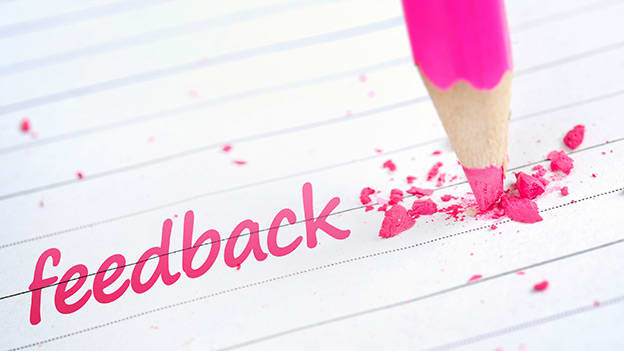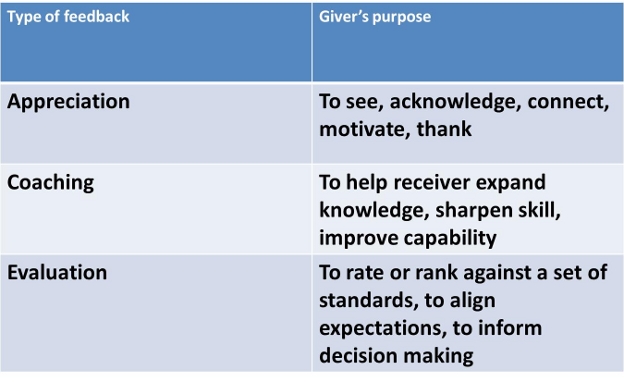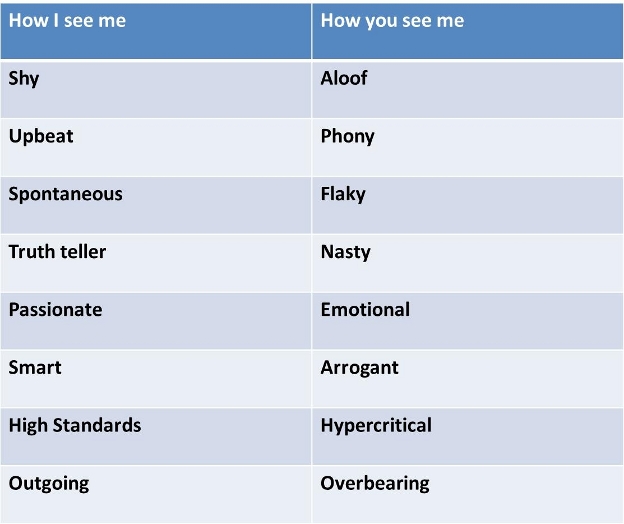Book Review: Thanks for the Feedback

When we ask people to list their most difficult conversations, feedback always comes up.
We swim in an ocean of feedback. When we give feedback, we notice that the receiver isn’t good at receiving it. When we receive feedback, we notice that the giver isn’t good at giving it!
The term ‘feedback’ was coined in the 1860s, during the industrial revolution to describe the way in which outputs of energy, momentum or signals are returned to their point of origin in a mechanical system. Learning about ourselves can be painful, sometimes brutally so. Receiving feedback doesn’t mean you always have to take the feedback. Receiving it well means engaging in the conversation skillfully.
People who are willing to look at themselves are just easier to work with and live with. Being with people who are grounded and open is energizing. Most of us just do fine with positive feedback, although even praise can sometimes leave us uneasy. Feedback can be of three types; separate appreciation, coaching and evaluation in the discussion.
Appreciation is about relationship and human connection. When your boss says how grateful he is to have you on the team. When you ask your boss for more direction, you are asking for coaching. When your boss says you are a strong performer and can be groomed, that’s evaluation. Reassurance, ‘you can do this’, ‘I trust you to do this’, ’go ahead’ also falls in additional judgments, but on the positive side.

Appreciation seems the least important, however, no relationship can move forward without appreciation both ways.
Effective feedback needs three things:
- What’s my purpose in giving/receiving this feedback?
- Is it the right purpose from my point of view?
- Is it the right purpose from the other person’s point of view?
Move from that’s wrong to tell me more
Feedback givers arrive at their feedback in two steps:
- They observe data
- They interpret the data that tells a story
Feedback is best when it’s specific and not beating around the bush. Most people are not specific in conversations for fear of hurting others. A blind spot is something we don’t see about ourselves that others do see. We all have blind spots because we can’t see our own faces in conversations, can’t hear our tone of voice and are unaware of our behavior. Look at it from a systems point: Be on the lookout if you are externalizing, take responsibility for your part, and see what will make you change.
Emotions also play a huge role in the gap between how others see us and how we assume we are seen. Emotional math's is really a subject of a larger dynamic. When something goes wrong and I am part of it, I will attribute it to the situation; you will tend to attribute it to my character. Tone of voice also conveys a surprising amount of information about our feelings. Sometimes we need to step up the tone to get the message.

The magic 40:
Research suggests that 50 % of our happiness is wired in, 40% is attributed to how we interpret and respond to what happens to us and 10% is driven by our circumstances. A movie is better when we get lost in it, and the same is true for life.
Move toward a growth identity

Rejecting feedback is easy. The three boundaries for rejection are; not taking advice, not taking feedback right now and stop and saying ‘I will leave if this is the feedback’. Ask for regular feedback and ask how you can help in a better manner. While giving feedback, look at what’s stopping people, i.e. getting in their way.
What leadership and HR can do?
- Don’t just trumpet benefits, explain tradeoffs
- Separate appreciation, coaching and evaluation
- Promote a culture of learners What team leaders and feedback givers can do?
- Model learning, request coaching
- As givers manage mindset and identity
- Be aware of how individual differences collide in an organization. (dreamy, articulate, big talkers, never get the concept of responsiveness and deadlines, they need to be shown the reality of business)
Authored by:
Douglas Stone & Sheila Heen












